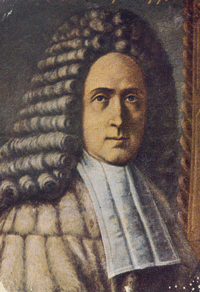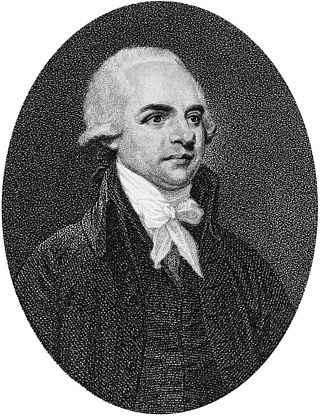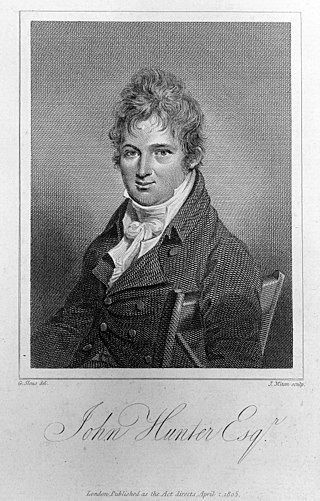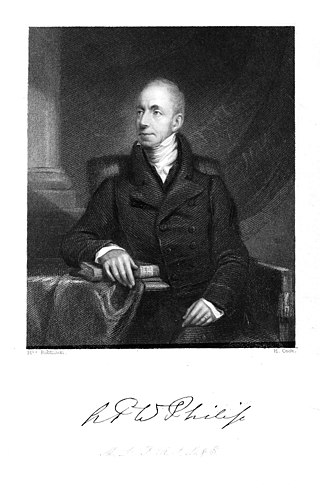
John Blackall M.A., M.D., FRCP (24 December 1771 – 10 January 1860) was an English physician.

John Blackall M.A., M.D., FRCP (24 December 1771 – 10 January 1860) was an English physician.
John Blackall was the sixth son of the Reverend Theophilus Blackall, a prebendary of Exeter Cathedral, by his wife Elizabeth Ley, and grandson of Bishop Ofspring Blackall, was born in St. Paul's Street, Exeter on 24 December 1771. He was educated at Exeter grammar school, and then studied at Balliol College, Oxford, as a member of which he graduated B.A. in 1793, M.A. in 1796, M.B. in 1797, and M.D. on 2 March 1801.
This section has multiple issues. Please help improve it or discuss these issues on the talk page . (Learn how and when to remove these template messages)
|
Immediately after taking his first degree he applied himself to the study of medicine at St Bartholomew's Hospital, and it was in its wards, while working as the clinical clerk of Dr. John Latham, that he made the observations on albuminuria which were afterwards stated and enlarged in his treatise on dropsies. In 1797 he settled in his native city, and on 1 June in that year was chosen physician to the Devon and Exeter Hospital. At this period, however, the medical practice of Exeter was engrossed by Dr. Hugh Downman, Dr. Bartholomew Parr, and Dr. George Daniell, and in 1801 Dr. Blackall resigned his appointment at Exeter, and settled at Totnes, where he became the physician of the district.
His reputation increased, and in 1807 he returned to Exeter, where he was a second time elected physician to the Devon and Exeter Hospital, and in 1812 was appointed physician to St. Thomas's Lunatic Asylum. In 1813 he published his well-known Observations on the Nature and Cure of Dropsies, London, 8vo, of which there are four editions, and which entitles its author to a position among medical discoverers. Dropsy is the morbid effusion of the serum of the blood into the cavities of the body and into the meshes of its tissues. It had been observed from the beginning of medicine, but up to the time of Richard Lower nothing was known of its morbid anatomy. He made the first step, which was the demonstration that dropsy of a limb always follows direct obstruction of its veins. Blackall's discovery came next, and was that dropsy is often associated with the presence of albumen in the urine. His treatise states clearly the relation between albuminuria and dropsy, and shows that he suspected that the kidneys were diseased in these cases. The further discovery of Richard Bright in 1836 of the constant relation between renal disease and albuminuria is based upon the observations first made by Blackall.
Blackall also published in 1813 some observations on angina pectoris, a disease then much discussed, owing to William Heberden's writings upon it. Blackall was admitted candidate of the Royal College of Physicians on 22 December 1814, and a fellow on 22 December 1815. His progress from this period was rapid and uninterrupted, and for a long series of years he had a great practice in the west of England. He was famed for his skill in diagnosis, and it was based upon a thorough method of clinical examination. He used no complicated remedies, was patient in waiting for results, and was justly confident in the conclusions to which he had attained with so much care.
Dr. Blackall retained his strength and faculties to an advanced age, and he did not relinquish private practice till he was eighty. He died at Southernhay, Exeter, on 10 January 1860, and was followed to the grave in the burial-ground of Holy Trinity Church by a large body of relations and friends and the whole of the medical profession resident within the city.
Dr Blackall also had a respected physician son, Thomas Blackall [1] who was also notable for his stewardship of the Spitchwick estate and his building of Dr Blackall's Drive.

Benjamin Rush was an American revolutionary, a Founding Father of the United States and signatory to the U.S. Declaration of Independence, and a civic leader in Philadelphia, where he was a physician, politician, social reformer, humanitarian, educator, and the founder of Dickinson College. Rush was a Pennsylvania delegate to the Continental Congress. He later described his efforts in support of the American Revolution, saying: "He aimed right." He served as surgeon general of the Continental Army and became a professor of chemistry, medical theory, and clinical practice at the University of Pennsylvania.

Giovanni Battista Morgagni was an Italian anatomist, generally regarded as the father of modern anatomical pathology, who taught thousands of medical students from many countries during his 56 years as Professor of Anatomy at the University of Padua.
William Charles Wells FRS FRSE FRCP was a Scottish-American physician and printer. He lived a life of extraordinary variety, did some notable medical research, and made the first clear statement about natural selection. He applied the idea to the origin of different skin colours in human races, and from the context it seems he thought it might be applied more widely. Charles Darwin said: "[Wells] distinctly recognises the principle of natural selection, and this is the first recognition which has been indicated".

John Cheyne FRSE FKQCPI was a British physician, surgeon, Professor of Medicine in the Royal College of Surgery in Ireland (RCSI) and author of monographs on a number of medical topics. He was one of the people to identify Cheyne–Stokes respiration.
Joseph Adams was a British physician and surgeon.

Samuel Jones Gee was an English physician and paediatrician. In 1888, Gee published the first complete modern description of the clinical picture of coeliac disease, and theorised on the importance of diet in its control. His contribution led to the eponym Gee's disease. Gee is also credited with the first English-language description of cyclic vomiting syndrome.
Hermann Senator was a German internist who was a native of Gnesen in the Prussian Province of Posen.

Thomas Trotter was a Scottish naval physician and author who was a leading medical reformer in the Royal Navy and an ardent critic of the slave trade. Trotter was born in Melrose, Roxburghshire, and studied medicine under Alexander Monro (secundus) in Edinburgh. His major work, the Medicina Nautica, was published in 1802 and provides a detailed examination of the state of naval medicine during the French Revolutionary Wars.
Robert Hooper (1773–1835) was a British physician, known as a medical writer.

Richard Pearson was an English physician and medical writer.

George Leith Roupell M.D. FRS (1797–1854) was an English physician.

James Hope (1801–1841) was an English physician. He has been called "the first cardiologist in the modern sense". He is known for discovering the early diastolic murmur of mitral stenosis in 1829.

William George Maton M.D. was an English physician, a society doctor who became associated with the British royal family. He published on natural history and antiquarian topics.

Thomas Kirkland M.D. (1721–1798) was an English physician and medical writer.
Sir Charles Scudamore (1779–1849) was an English physician, known for his writings on gout.

Dr John Hunter FRSE (1754–1809) was a Scottish physician linked to Jamaica.

Bartholomew Parr FRS FRSE (1750–1810) was an 18th-century British physician and medical author, known for his London Medical Dictionary published in 1809.

Alexander Philips Wilson Philip FRS FRSE was a Scottish physician, physiologist and medical author. He conducted experimental studies on animal and human physiology particularly dealing with digestion, circulation, and the nervous system. He is thought to have gone bankrupt and fled to France where he died in obscurity.

Thomas Glass (1709–1786) was an English physician and medical writer.
Dr Thomas Blackall M.A., M.D., FRCP was an English physician, son of another renowned physician John Blackall. Born in Devon, he attended Cambridge, before working as a physician in London, and then returning to Devon on the death of his father, where he used his inheritance to purchase the large Spitchwick estate.
![]() This article incorporates text from a publication now in the public domain : "Blackall, John". Dictionary of National Biography . London: Smith, Elder & Co. 1885–1900.
This article incorporates text from a publication now in the public domain : "Blackall, John". Dictionary of National Biography . London: Smith, Elder & Co. 1885–1900.